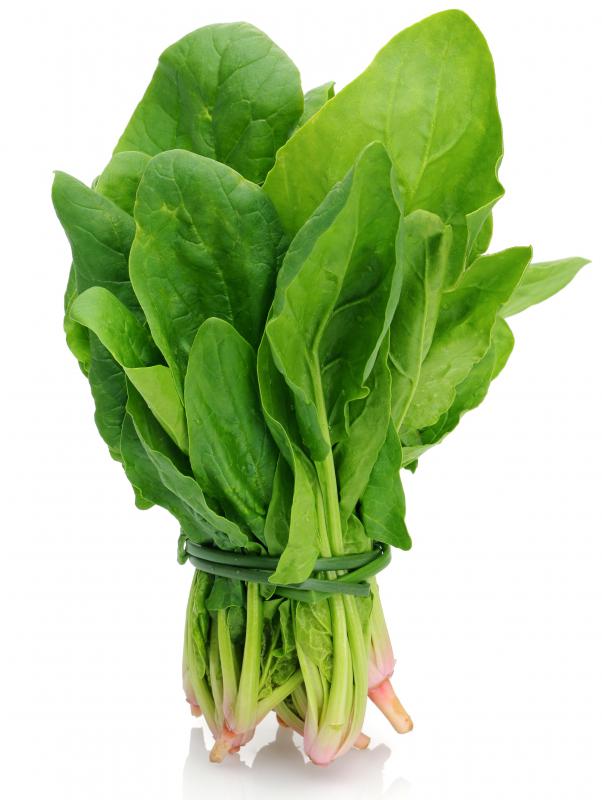At AllThingsNature, we're committed to delivering accurate, trustworthy information. Our expert-authored content is rigorously fact-checked and sourced from credible authorities. Discover how we uphold the highest standards in providing you with reliable knowledge.
What Is Hibiscus Sabdariffa?
Hibiscus sabdariffa is a type of flowering plant native to parts of West Africa that grows and is cultivated today in many tropical climates. It’s often more commonly known as the roselle plant. It has large blossoms that can bloom year round, though a lot of this depends on the specifics of its location as well as things like soil richness. In the heart of the tropics it’s usually a perennial plant, but in colder climates it can be an annual and has been known to adapt to a shorter blooming schedule. The leaves are frequently eaten, and the stems can be used to make a variety of tough fibers that are popular in weaving. This plant’s fruits are edible, as well, and are often made into jams, jellies, and sauces. In some places it is also revered for its medicinal properties. People sometimes drink tinctures and teas made from various parts of the plant, and the oils from both the blooms and the fruits are thought to have antiseptic and other healing powers, too.
Plant Basics

The Hibiscus sabdariffa plant is a species in the Hibiscus genus and the Malvaceae family. It’s usually a large flowering shrub, but depending on its location and cultivation it can be a much smaller herb-like bush, too. In the dense jungles of Africa, it’s often a soaring and climbing plant that almost looks like a vine, and can reach up to 8 feet (about 2.5 m) in height. On commercial farms, though, it tends to stay much lower to the ground and typically stays quite small.

Regardless of the specifics of location, the leaves that grow along the roselle plant’s branches range in color from green to red, are alternate, and bear three to seven lobes. Bold flowers add to its aesthetic appeal. They are generally large and red, yellow, or white in color with a deep red spot at the base of each petal. These plants also bear a fleshy calyx, or fruit, that begins as a medium green hue, but gradually deepens into a bright red as the fruits begin to mature.

Roselle is cultivated in many places around the world both for its good looks and many practical uses, and tends to be known by different names in different places. It’s called zobo in Nigeria, flor de Jamaica in Mexico, and sorrel in most of the Caribbean, for instance. Though the plant does best in naturally temperate and tropical climes, it can also adapt to colder regions if placed in a greenhouse or other controlled environment.
Stems in Demand
The stems of these plants are one of the biggest reasons it is so widely cultivated around the world. Stems tend to be very dense and durable, and they can be stripped into fibers that can be dried and used as jute, a vegetable fiber used for weaving cloth and burlap. The speed with which the plants regenerate and grow makes the process economical for many laborers and farmers around the world.
Uses for the Fruit
There are also many culinary uses for Hibiscus sabdariffa, though most of these center on the dense calyx. Once ripe, this fruit typically has a unique sweet-tart flavor that is commonly used as the base of different jams, jellies, and syrups. It is frequently baked into desserts and used to make sweet drinks. Outside of the culinary realm the fruit is sometimes also used in the manufacture of dyes, primarily for fabrics. At the peak of their maturity they produce a vibrant red color, but younger bulbs can also produce rich yellows and oranges.
Edible Leaves
Leaves can also be consumed. They tend to have a bitter taste when raw, so most cooks will sautee them or boil them. Some holistic chefs insist that they can be interchanged with spinach in almost any recipe. They are frequently prepared with other vegetables and spices. Leaves can also be infused with boiling water to make a sort of herbal tea.
Possible Medicinal Properties
As well as being delicious, Hibiscus sabdariffa is also thought to have many medicinal properties. Different parts of this plant are thought to have different actions, including antiseptic, aphrodisiac, purgative, and diuretic. In folk medicine, this plant is often used to soothe cold symptoms, cure digestive and heart-related ailments, and heal skin issues, such as abscesses, wounds, and ulcers. Additionally, some feel that the dried calyx may be beneficial in the treatment and prevention of certain types of cancer.
Frequently Asked Questions
What is Hibiscus sabdariffa and where is it commonly found?
Hibiscus sabdariffa, also known as roselle or sour tea, is a species of Hibiscus native to West Africa. It thrives in tropical and subtropical climates and has been widely cultivated in regions such as the Caribbean, Asia, and Central America. The plant is renowned for its vibrant red flowers and calyces, which are used in various culinary and medicinal applications.
What parts of the Hibiscus sabdariffa are used, and how?
The calyces of Hibiscus sabdariffa are the most commonly used part of the plant. They are harvested to make herbal teas, jams, spices, soups, and sauces. The leaves can also be eaten as a spicy version of spinach. Additionally, the seeds are sometimes used for their oil and the fiber from the stems for making paper or natural crafts.
Are there any health benefits associated with Hibiscus sabdariffa?
Yes, Hibiscus sabdariffa is associated with several health benefits. It is rich in antioxidants and has been traditionally used to help lower blood pressure, support liver health, and aid digestion. Studies suggest that the anthocyanins in the calyces may have anti-inflammatory and cholesterol-lowering effects, according to research published in the Journal of Ethnopharmacology.
Can Hibiscus sabdariffa be grown at home, and if so, how?
Yes, Hibiscus sabdariffa can be grown at home in areas with a warm climate. It requires full sun, well-drained soil, and regular watering. Start by planting seeds in pots or directly in the ground after the last frost. The plant is relatively low-maintenance but may need protection from pests and support as it grows due to its tall stature.
What does Hibiscus sabdariffa taste like?
Hibiscus sabdariffa has a tart, cranberry-like flavor, which makes it a popular choice for teas and beverages. The sour taste is primarily due to the presence of organic acids, such as citric and malic acid. Its unique flavor profile allows it to be used as a natural flavoring agent in a variety of recipes.
Is Hibiscus sabdariffa safe for everyone to consume?
While Hibiscus sabdariffa is generally considered safe for most people, it can interact with certain medications, such as acetaminophen, and may affect blood pressure levels. Pregnant or breastfeeding women should consult with a healthcare provider before consuming it. As with any supplement or herbal product, it's best to discuss with a healthcare professional before adding it to your diet.
AS FEATURED ON:
AS FEATURED ON:













Discussion Comments
Hibiscus sabdariffa is native to Africa. That's why it is not very well known in the US. It is imported but mainly used as a food coloring. In other cultures, especially in Africa, Middle East and Asia, hibicus sabdariffa is used much more, as a food ingredient and herbal remedy.
But interest in the plant seems to be increasing. I have known about and have used hibiscus since I visited France many years ago. I am coming across more and more Americans who know about and use hibiscus. Hibiscus tea is becoming popular.
@discographer-- I wouldn't be surprised if it's the hibiscus controlling your sugar. The flower has many benefits when drank as a tea. It's rich in antioxidants and some people believe that it can help prevent illness and even cancer. I don't know if there are any studies done on the medicinal properties of hibiscus. So it would be wrong to claim that it does any of these things. But I have been drinking hibiscus tea for years and have not experienced any negative side effects.
The tea does have a unique flavor. Some people find it to be bitter or sour as you said. But if you sweeten it with a natural sweetener, this won't be problem. I think the taste is pleasant and I absolutely love the color. I think hibiscus tea could be used in baking to naturally add color to baked goods or toppings.
The herbal tea I drink has hibiscus in it. I think it's the hibiscus that gives the tea its bright red color. The tea smells very good and is a little bit sour. I drink it in the evening. This tea seems to help control my blood sugar although I'm not sure if it's the effect of the hibiscus or the other herbs in the tea. I should buy a hibiscus tea and compare the results.
Post your comments